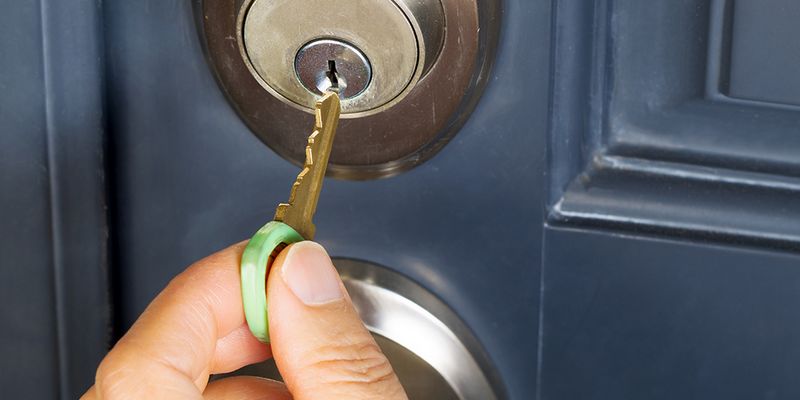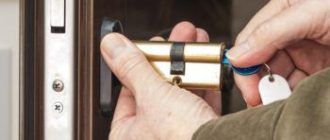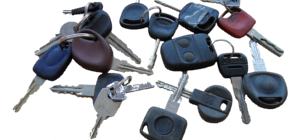
What is Lock Bumping
Lock bumping is a technique that has been gaining popularity among burglars and homeowners alike. But what exactly is lock bumping, and how does it work? In simple terms, lock bumping is a method used to open a lock using a specially designed key, known as a bump key. This key is crafted to fit into the lock and be manipulated in a way that causes the pins inside the lock to align, allowing the lock to be turned.
Lock bumping is a relatively easy technique to learn, and it can be used on a wide range of locks, including both traditional pin-tumbler locks and high-security locks. This, combined with the fact that bump keys can be easily purchased online, has made lock bumping a significant concern for homeowners and businesses alike. However, it’s important to note that lock bumping is typically only effective on older, lower-quality locks.
To prevent lock bumping, there are several steps that can be taken. One option is to upgrade your locks to more secure models that are resistant to bumping. High-security locks, such as those with rotating discs or magnetic pins, are much more difficult to bump. Another option is to install additional security measures, such as deadbolts or security pins, that make the lock more resistant to bumping.
In conclusion, lock bumping is a technique that has become increasingly popular among burglars due to its simplicity and effectiveness. However, by understanding how lock bumping works and taking appropriate security measures, you can protect your home or business from this type of threat.
Understanding Lock Bumping Techniques
Lock bumping is a technique commonly used by locksmiths to open cylinder locks quickly and efficiently. It involves the use of a specially crafted key, known as a bump key, to manipulate the lock pins and allow the cylinder to turn. This method of bypassing locks has gained notoriety in recent years due to its effectiveness and ease of use.
What exactly is lock bumping? Bumping is a technique that involves inserting a bump key into the lock and applying pressure. The bumps on the key are designed to strike the lock pins, causing them to momentarily jump and allowing the cylinder to rotate. When executed correctly, lock bumping can open a wide range of pin tumbler locks without leaving any visible signs of forced entry.
Lock bumping works on the principle that the pins in a pin tumbler lock are spring-loaded and sit at different heights when the lock is in the locked position. The key pins and driver pins are lined up precisely along the shear line, which prevents the cylinder from rotating. However, when a bump key is used, the key bumps cause the pins to momentarily jump above the shear line, creating a brief window of opportunity to turn the cylinder.
It is important to note that while lock bumping can be an effective method for opening certain types of locks, it is also a technique that can be used by criminals for unlawful purposes. As such, homeowners and businesses should take precautions to secure their properties, such as using high-security locks that are resistant to bumping, installing additional security measures, and seeking the advice of reputable locksmiths.
| Key Points: |
| Lock bumping is a technique used to open cylinder locks. |
| Bumping involves using a specially crafted key called a bump key. |
| The bumps on the key manipulate the lock pins to allow the cylinder to turn. |
| Lock bumping works by momentarily jumping the lock pins above the shear line. |
| Homeowners and businesses should take precautions to prevent lock bumping. |
History of Lock Bumping
Lock bumping is a technique that has been used for many years to gain unauthorized access to locked doors. It is believed to have originated in the 1970s in Denmark, where it was used by locksmiths as a method for quickly opening locked doors without causing any damage.
Bumping as a method of bypassing locks gained popularity in the 1990s, when it was discovered by the general public and began to be utilized by burglars. The technique involves using a specially crafted bump key to temporary manipulate the pins inside a lock, allowing it to be easily turned and unlocked.
Although lock bumping is widely known as a security vulnerability, many lock manufacturers have been slow to address the issue and improve the security of their products. It wasn’t until the mid-2000s that some manufacturers started introducing bump-resistant locks that are designed to resist bumping techniques.
Today, lock bumping remains a concern for homeowners and businesses alike, as burglar continue to exploit this technique to gain illegal entry. It serves as a reminder that staying informed about the latest security measures and investing in high-quality locks is essential in protecting one’s property.
Advantages of Lock Bumping
Lock bumping is a technique used to open a lock without a key, utilizing a special key called a bump key. This method offers several advantages:
- Effectiveness: Lock bumping is a highly effective and efficient method of gaining entry to a locked door. It can be used on a wide range of traditional pin tumbler locks, making it a versatile technique.
- Quick and easy: Bumping a lock can be performed quickly and with relative ease, especially by someone with experience or training in the technique. It requires limited tools and can be done discreetly.
- Non-destructive: Unlike other methods of gaining entry, such as lock picking or lock drilling, lock bumping does not cause any damage or leave any visible signs of forced entry. This can be particularly advantageous for situations where there is a need for covert access.
It is important to note that while lock bumping can be a useful technique for certain purposes, it can also be exploited by malicious individuals. Therefore, it is crucial to ensure the security of your locks by using bump-proof or high-security locks, as well as implementing additional security measures to protect against unauthorized access.
Disadvantages of Lock Bumping
Lock bumping is a technique that is used to quickly and easily bypass a lock using a special key called a bump key. While it is marketed as a method of emergency entry for homeowners who are locked out of their homes, there are several disadvantages to consider.
Firstly, lock bumping is a relatively easy skill to learn, meaning that it can be used by individuals with malicious intent. Locksmiths and other professionals who are trained in lock picking techniques may use lock bumping to gain unauthorized access to homes or businesses.
Secondly, lock bumping does not leave any visible signs of forced entry. Unlike traditional lock picking or breaking a lock, lock bumping does not damage the lock or leave any marks on the door. This makes it difficult to identify if a lock has been compromised and may make it harder for law enforcement to investigate a break-in.
Thirdly, lock bumping can be used on a wide variety of locks, including those that are considered to be high-security. While some locks may have additional security features to help prevent lock bumping, many locks are still vulnerable to this technique. This means that even if you invest in a high-security lock, it may still be susceptible to lock bumping.
Overall, lock bumping has significant disadvantages that make it a concern for homeowners and business owners alike. It is important to be aware of this technique and take steps to protect yourself and your property from potential unauthorized access.
Types of Locks Vulnerable to Bumping
Lock bumping is a technique used to quickly and silently open a lock using a specially crafted key called a bump key. This method can be used to open various types of locks, but not all locks are vulnerable to bumping. Here are some of the most commonly vulnerable types of locks:
| Cylinder Locks | These locks are particularly susceptible to bumping due to their design. They feature a cylindrical shape and use pins to keep the lock mechanism in place. The pins can be easily manipulated using a bump key, allowing for quick and easy unlocking. |
| Tubular Locks | Tubular locks, also known as radial locks, are commonly found in residential and commercial properties. They have a tubular shape and use pins or tumblers to secure the lock. Similar to cylinder locks, they can be bumped open using a specially designed bump key. |
| Rim Locks | Rim locks are often found on older doors and are easier to bump open compared to more modern lock types. They are mounted on the surface of the door and use a latch to secure it. Bumping these locks can be done with minimal effort, making them highly vulnerable to this technique. |
| Padlocks | Padlocks are commonly used for securing gates, lockers, and other objects. They are often vulnerable to bumping due to their design, which typically uses pins or tumblers to secure the lock. With the right bump key, padlocks can be opened quickly and silently. |
It is important to note that while these types of locks are more vulnerable to bumping, there are still other factors that can affect their susceptibility, such as the quality and condition of the lock, as well as the skill and tools of the person attempting to bump it.
How Lock Bumping Works: Step-by-Step Guide
Lock bumping is a technique used to open a lock without a key. It is a method that involves using a specially crafted bump key to manipulate the pins inside the lock, causing them to align and allowing the lock to be turned.
Here is a step-by-step guide on how lock bumping works:
- Prepare the bump key: A bump key is a key that has been filed down to the lowest depth for each pin position. This allows the key to fit into the lock and manipulate the pins more easily.
- Insert the bump key: Insert the bump key into the lock, making sure it is fully inserted.
- Apply pressure: Apply slight pressure to the key in the direction you would turn the lock with a key.
- Strike the bump key: Using a bump hammer or a similar object, strike the bump key firmly. The goal is to transfer the energy from the strike to the pins inside the lock.
- Turn the lock: While maintaining pressure on the key, turn the bump key in the direction you would turn the lock with a key.
- Lock opens: If successful, the pins inside the lock will align, allowing the lock to be turned and opening the door.
It is important to note that lock bumping is a locksmithing technique and should only be used for legal purposes. It is also crucial to understand that lock bumping can be used to bypass many types of locks, so it is important to have proper security measures in place to protect against this technique.
Signs of Lock Bumping
Lock bumping is a technique used by intruders to gain unauthorized access to a locked door. Although it leaves little to no visible signs of forced entry, there are a few telltale signs that can indicate if a lock has been bumped.
The first sign of lock bumping is an unusually clean keyway. When a lock is bumped, a special bump key is inserted into the keyway and then tapped to create enough force to align the pins and allow the lock to turn. This tapping can leave marks or scratches on the inside of the keyway. However, since bumping does not involve any forced entry, these marks are usually minimal and difficult to detect.
Another sign to look for is if your lock suddenly stops working or becomes difficult to turn. Bumping can cause the internal pins of the lock to shift or become misaligned, preventing the key from turning smoothly. If you notice these issues with your lock, it may be an indication that someone has attempted to bump it.
Additionally, if you find small metal shavings or debris around your lock or on the floor nearby, it is possible that someone has been attempting to bump your lock. These shavings can be a result of the bump key scraping against the pins inside the lock or from the tapping motion used to create the necessary force.
While these signs can be an indication of lock bumping, it is important to note that they are not definitive proof. Other factors, such as regular wear and tear or a faulty lock, can also cause similar symptoms. If you suspect that your lock has been bumped, it is recommended to hire a professional locksmith to assess the situation and provide the necessary repairs or replacement.
How to Prevent Lock Bumping
Lock bumping is a technique used to open locks by manipulating the pins inside the lock cylinder. It can be a serious security threat and it’s important to take steps to prevent it.
To prevent lock bumping, there are several measures you can take:
1. Upgrade your locks: Consider installing high-security locks that are specifically designed to resist lock bumping. These locks often have anti-bump pins or other mechanisms that make bumping difficult or impossible.
2. Install a deadbolt: Adding a deadbolt to your door can provide an extra layer of security. Make sure the deadbolt is properly installed and has a reinforced strike plate.
3. Use a lock with an internal locking mechanism: Look for locks that have an internal locking mechanism, such as a sidebar or a sidebar mortise lock. These types of locks are more resistant to bumping.
4. Reinforce your doors and frames: Make sure your doors and frames are solid and well-made. Consider reinforcing them with metal plates or installing a door frame reinforcement kit to prevent break-ins.
5. Install a security system: A security system can serve as a deterrent to potential burglars. Choose a system that includes sensors for doors and windows, as well as motion detectors.
6. Keep your property well-lit: Burglars are less likely to target a property that is well-lit. Install outdoor lighting and keep your property illuminated at night. Consider motion-activated lights for added security.
7. Be cautious with your keys: Keep your keys secure and avoid leaving them in obvious places, such as under a doormat or in a flowerpot. If you lose a key or suspect it may have been stolen, have your locks rekeyed or consider replacing them.

8. Be vigilant: Stay alert and be aware of your surroundings. If you notice any suspicious activity or unfamiliar individuals in your neighborhood, report it to the authorities.
By taking these preventive measures, you can greatly reduce the risk of lock bumping and increase the security of your home or business.
Lock Bumping vs. Lock Picking: Key Differences
Lock bumping is a technique used to open a lock by manipulating its pins with a specially designed key called a bump key. It works by applying a striking force to the key, causing the pins to jump momentarily and allowing the lock to be easily turned.
On the other hand, lock picking is a skillful method of manipulating the lock’s internal components using various tools such as picks and tension wrenches. With lock picking, the locksmith carefully moves each pin, one by one, until they align with the shear line and enable the lock to be turned.
The key difference between lock bumping and lock picking lies in the level of difficulty and expertise required to execute each technique. Lock bumping, in general, is considered to be a relatively simple and quick method that can be learned by almost anyone with minimal training. In contrast, lock picking requires a higher level of skill and knowledge, as it involves a more precise manipulation of the lock’s pins.
Another difference is the visibility of the technique. Lock bumping leaves no visible signs of forced entry, making it difficult to detect if a lock has been bumped. Lock picking, on the other hand, may leave some slight marks or damage on the lock, which can be detected upon inspection.
It’s important to note that both lock bumping and lock picking are techniques that can be used for both legal and illegal purposes. While locksmiths and security professionals may use these techniques to gain authorized access or improve security systems, criminals may use them to unlawfully enter buildings or vehicles.
In conclusion, lock bumping and lock picking are two distinct techniques that can be used to bypass locks, but they differ in terms of difficulty, visibility, and the level of expertise required to perform them.
Legal Implications of Lock Bumping
Lock bumping is a technique used to bypass pin tumbler locks using a special key called a “bump key”. While lock bumping is typically used by locksmiths to gain access to locked doors in emergency situations, it has also gained attention among criminals who use it for illegal purposes.
What makes lock bumping a controversial subject are the legal implications associated with its use. In many countries, possessing or producing bump keys for unauthorized purposes is considered illegal and can lead to criminal charges. The act of lock bumping itself, regardless of the intent, is often seen as an unlawful method of gaining entry without the owner’s consent.
In some jurisdictions, lock bumping is even considered a form of trespassing or breaking and entering. If a person is caught using bump keys to access a property unlawfully, they can face serious consequences, including fines and imprisonment.
Lock manufacturers and security experts continuously work to improve the design of locks and make them more resistant to bumping. However, this doesn’t mean that individuals can use bump keys without legal repercussions.
In order to stay on the right side of the law, it is crucial to understand the regulations surrounding lock bumping in your jurisdiction. If you are a locksmith, it is important to use lock bumping techniques responsibly and only for legitimate purposes. Consumers should also take steps to protect themselves by investing in high-security locks that are more resistant to bumping attacks.
Overall, while lock bumping can be a valuable skill for locksmiths, it is essential to remember its legal implications. Using bump keys without proper authorization can lead to serious consequences, making it important to exercise caution and adhere to the laws governing lock bumping.
Lock Bumping in the Media
Lock bumping is a technique that has gained considerable attention in the media in recent years. With the rise in home burglaries and security concerns, lock bumping has become a topic of interest for both the general public and professionals in the security industry. But what exactly is lock bumping and why is it making headlines?
Lock bumping is a method used to open locks without the original key. It involves inserting a specially crafted bump key into the lock and then applying pressure to “bump” the pins inside the lock, causing them to momentarily jump and allowing the lock to be turned open. This technique can be executed quickly and silently, making it an attractive method for burglars.
The prevalence of lock bumping in the media has shed light on the vulnerability of traditional key locks. Many news outlets have featured stories on how easy it is to perform lock bumping, highlighting the need for stronger security measures. Articles and reports often discuss the potential risks and consequences associated with lock bumping, urging homeowners to consider upgrading their locks to more secure options.
Locksmiths and security experts have also been featured in the media, providing insights and advice on how to prevent lock bumping. They emphasize the importance of using high-security locks that are resistant to bumping techniques. These experts often recommend installing bump-proof locks, which feature additional security features such as anti-bump pins or advanced locking mechanisms.
Furthermore, the media coverage of lock bumping has prompted discussions on the ethics of lock bumping and whether it should be illegal. Some argue that lock bumping is a form of lock picking and should be treated as a criminal offense. Others believe that lock bumping should be seen as a technique that exposes the vulnerabilities of traditional locks, leading to improvements in lock technology.
In conclusion, lock bumping has received significant attention in the media due to its potential risks and its impact on home security. The coverage has raised awareness about the vulnerability of traditional locks and the need for stronger security measures. As a result, individuals and businesses are encouraged to stay informed about lock bumping and consider upgrading their locks to protect against this technique.
Lock Bumping: Myth vs. Reality
In the world of lockpicking techniques, lock bumping is a term that is often surrounded by myths and misconceptions. To separate fact from fiction, it’s important to understand what lock bumping is and what it is not.
| Myth: | Lock bumping is a high-tech method used only by skilled criminals. |
| Reality: | Lock bumping is actually a relatively simple lockpicking technique that can be easily learned and executed by almost anyone. It does not require advanced technology or special skills. |
| Myth: | Lock bumping can open any type of lock. |
| Reality: | While lock bumping can be effective against many types of traditional pin tumbler locks, it may not work on unconventional or high-security locks. Some locks are designed to be resistant to bumping techniques. |
| Myth: | Lock bumping leaves no trace and does not damage the lock. |
| Reality: | Lock bumping can leave behind slight marks or scratches on the lock, which could indicate tampering. Additionally, repeated bumping attempts could potentially damage the lock or the key itself. |
| Myth: | Using a bump key is the only way to perform lock bumping. |
| Reality: | Bump keys are commonly used for lock bumping, but other objects, such as modified screwdrivers or even regular keys, can be used to achieve the same effect. The key is to create a sudden impact that causes the lock pins to jump into place, allowing the lock to be turned. |
By understanding the reality of lock bumping, individuals can take necessary precautions to protect their homes and properties against this technique. Investing in high-security locks, using additional security measures, or seeking professional locksmith services can help prevent unauthorized entry.
Lock Bumping and Home Security
Lock bumping is a technique used by burglars to gain unauthorized entry into homes. It involves manipulating a lock using a specially crafted bump key, which is inserted into the keyway and then struck with a blunt object. When done correctly, this technique can quickly and easily bypass most traditional pin tumbler locks.
Understanding lock bumping is crucial for homeowners looking to improve their home security. By knowing how this technique works, individuals can take the necessary steps to protect themselves and their property.
One way to enhance home security is by investing in high-security locks that are specifically designed to resist bumping. These locks feature additional security measures such as special pins, trap pins, and sidebar mechanisms that make them more resistant to bumping attacks.
Furthermore, homeowners can also reinforce their doors and frames to prevent unauthorized entry. This can include installing deadbolts with longer throw lengths, reinforced strike plates, and additional door jamb reinforcement products.
Additionally, homeowners should consider using electronic locks and smart home security systems to further enhance their home’s security. These systems often come with features like remote control access, activity logs, and real-time notifications, providing homeowners with added peace of mind.
Regularly maintaining and inspecting locks is another important aspect of home security. By ensuring that locks are in good working condition and replacing any worn-out or damaged locks, homeowners can reduce the risk of lock bumping or any other lock-related vulnerabilities.
In conclusion, understanding lock bumping and taking appropriate measures to protect against it is vital for home security. By investing in high-security locks, reinforcing doors and frames, utilizing electronic locks and smart home security systems, and regularly maintaining locks, homeowners can significantly reduce the risk of unauthorized entry and burglaries.
Lock Bumping: Frequently Asked Questions (FAQ)
Q: What is lock bumping?
A: Lock bumping is a technique used to open a lock using a special key called a bump key. This technique involves inserting the bump key into the lock and then using a mallet or another tool to give it a quick bump, causing the pins inside the lock to jump, and allowing the lock to be easily opened.
Q: Is lock bumping legal?
A: In most jurisdictions, lock bumping is considered legal as long as it is done with the owner’s permission. However, it is important to note that lock bumping can be used for illegal purposes, such as breaking into someone’s property without their consent, which is a criminal offense.
Q: How can I protect my locks from bumping?
A: There are several ways to protect your locks from bumping. One option is to replace your standard locks with bump-proof locks that have additional security features. Another option is to install a lock bumping deterrent, such as a security pin or a lock cylinder with anti-bump pins. It is also important to ensure that your doors and windows are secure and that you have a reliable home security system.
Q: Can any lock be bumped?
A: Most pin tumbler locks can be bumped, including both residential and commercial locks. However, some higher security locks, such as those with mushroom pins or spool pins, are designed to be more resistant to bumping. These locks are often used in high-security applications where a higher level of protection is required.
Q: How can I learn more about lock bumping?
A: If you want to learn more about lock bumping, there are various resources available. You can research online, read books and articles on the subject, or even attend workshops or training courses on lock picking and lock bumping. However, it is important to always use this knowledge responsibly and legally.
Q&A:
What is lock bumping and how does it work?
Lock bumping is a technique used to open a lock by striking or bumping a specially crafted key against the pins of the lock. The force of the bump causes the pins to jump, allowing the lock to be turned and opened. This method is relatively easy to learn and can be done with minimal tools.
Is lock bumping legal?
Lock bumping itself is not illegal in most places. However, it is considered a form of lock picking, which is illegal if done without proper authorization. It is important to only use lock bumping techniques in a legal and ethical manner.
Can my locks be bumped?
Most traditional pin tumbler locks can be susceptible to bumping. These include many common household locks such as deadbolts and padlocks. High-security locks with specialized construction are less likely to be vulnerable to bumping.
How can I protect myself against lock bumping?
There are several ways to protect yourself against lock bumping. One option is to upgrade to high-security locks, which are designed to be more resistant to bumping. Another option is to use a lock with a sidebar mechanism, which makes it virtually impossible to bump. Additionally, installing a security system and practicing good security habits can help deter burglars.
Are there any other methods to open a locked door without a key?
Yes, there are several other methods to open a locked door without a key. These include lock picking, using a bypass tool, using a lock decoder, or using a technique called impressioning. It is important to note that most of these methods are illegal if used without proper authorization.






